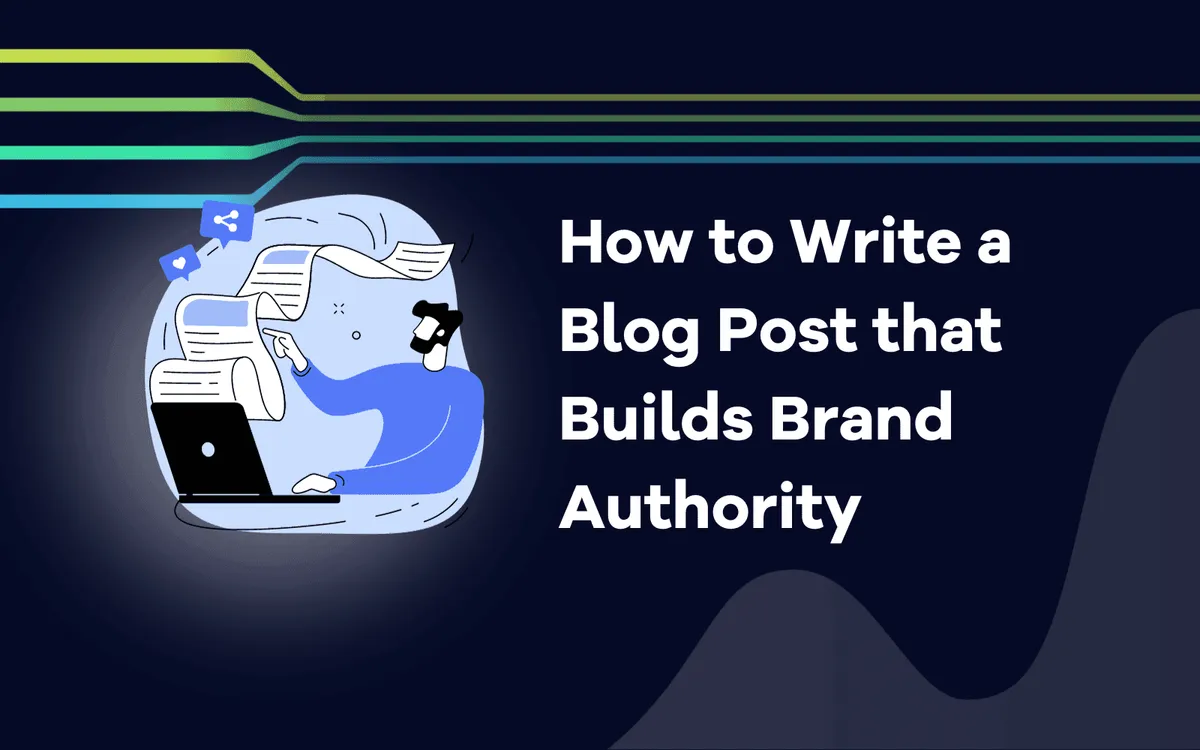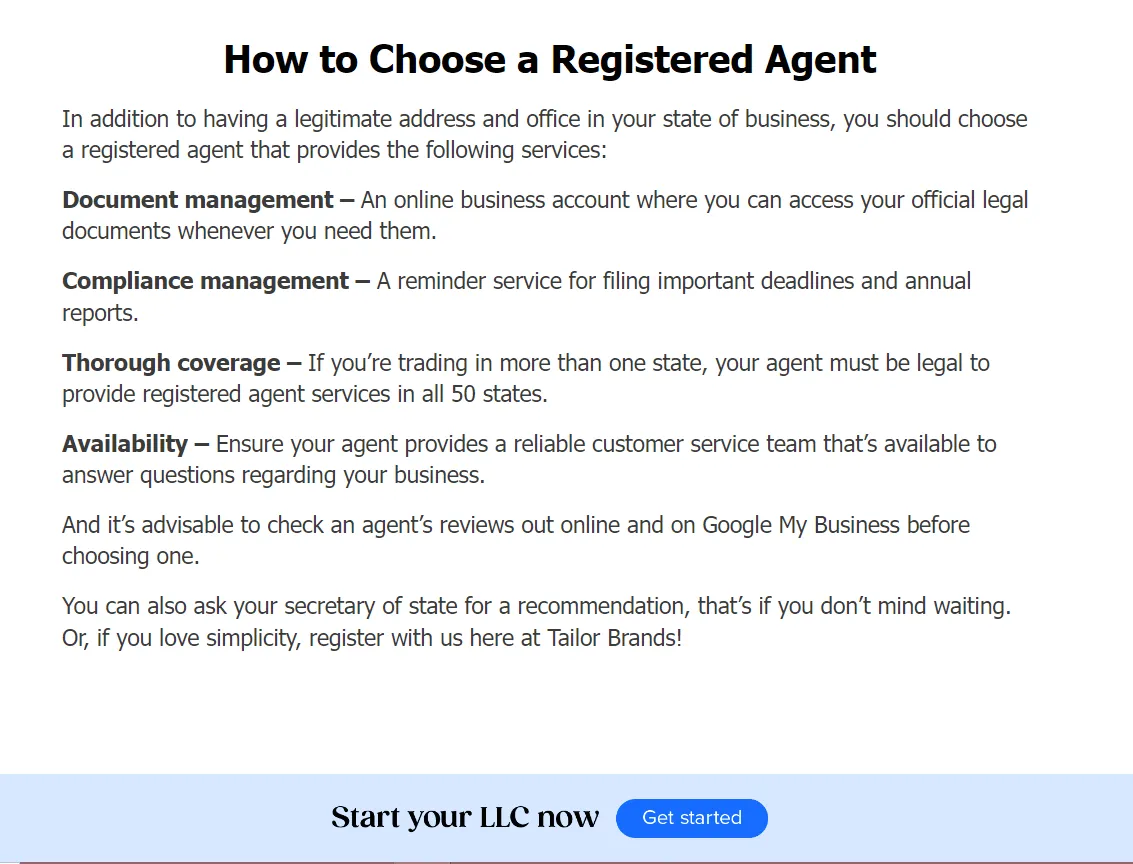
How to Write a Blog Post that Builds Brand Authority

Joanne Camarce
November 1, 2023
Your blog is one of your best tools to attract new customers and turn visitors into buyers. Here are 8 simple ways to write a blog post that establishes trust and builds your brand authority.

How much does your audience like and trust your brand? How do your customers view your brand? How often does your audience engage with your brand?
Are you happy with your answers to the previous three questions?
If not, you may be struggling to establish brand authority.
Brand authority, or the extent to which customers view your brand as a subject matter expert, is the secret ingredient to building meaningful connections with your audience.
And the reason for that is simple.
Over time, brand authority transforms into brand influence — a magnetic force that draws businesses and ideal customers together in harmony.
But brand authority doesn’t always come easy. It takes intention, a keen understanding of how your target audience thinks, and the right strategy.
Enter blogging: The brand authority boosting secret weapon you’ve been searching for.
Blogging is a skill worth learning if you’re looking to develop clout in your field, form long-lasting customer relationships, and establish yourself as an industry expert.
Whether you’re looking to revamp your current blog or you’re new to the blogging world, blogging for brand authority is a skill that can transform how much your audience likes and trusts you.
Ready to discover how to write a blog post that builds brand authority? In today’s article, we’ll show you how to do just that in eight simple steps.
Ready?
Let’s begin.
#1. Base your article on search intent
If you’re blogging to boost brand authority, you need to start with search intent.
So, what does your audience want or need to know?
When conducting SEO research, don’t rush. In fact, we recommend spending most of your time on research, strategy, and outlining. This way, when it comes time to flesh out your article, you’ll be armed with the information and knowledge you need to see it through. It’s a process, so you might even have to included in your process or workflow software.
For instance, if you own a CX agency, you might jump to target the key phrase “customer experience”. Since customer experience is at the core of what you do, it only makes sense to cover this key phrase, right?
But here’s the deal. If you haven’t earned the domain authority (DA) necessary to compete for a particular keyword, then you’ll be fishing in the wrong pond. In other words, your post likely won’t rank high enough for your audience to see it.
So, what should you do instead?
We recommend using the “Matching Terms” feature in Ahrefs.
Here’s how:
- Open Ahrefs keyword explorer. Plug in a broad one-to-three word phrase around a topic. In this example, Jeremy searched the term “nursing”.
- Click “Matching Terms”. This will pull up a long list of searches that contain “nursing” in the query.
- Next, set the following filters and parameters:
- Matching terms.
- Set the keyword difficulty to 30 max — or higher depending on your site strength.
- Set the keyword word count to a minimum of three words.
- Sort by traffic potential, not volume — this considers all related keywords a page will rank for.
 Source: LinkedIn
Source: LinkedInAnd that’s it! You officially have a list of target keywords and phrases that have excellent traffic potential — aka endless ideas to help build topical authority in your space.
After you’ve chosen your core topic for the piece, be sure to note what your competitors’ content scored for the same topic so you can aim to beat them by five or more points.
For instance, if your competitors scored between 38 and 45 for the phrase “how to deliver a pristine customer experience”, then you’ll want your blog post to score at least 50 points or higher.
Another pro tip: Research frequently asked questions related to your main topic. These are golden nuggets that you can use as headers throughout the body of your article.
As far as the blog post title goes, make sure you include your target key phrase in there — preferably toward the beginning. Psst: Here’s a cheat sheet with 50+ headline formulas and templates so you can write a blog post title that turns heads. You’re welcs! ❤️
#2. Personalize the article to your audience
The second step to writing a blog post that builds authority?
Consider your target audience. Who are you speaking to?
When positioning your article, you’ll need to consider:
Who your exact audience is
What pain points they have
How you can solve their problems
What messaging style and tone they prefer
For instance, if you’re writing an article on the best debit cards for teens, then you’re targeting Gen Zers, a demographic born between 1997 and 2012.
So, your next order of business? Conducting research to learn more about how Gen Zers think and what drives their loyalty to brands.
For instance, Gen Zers build trust with brands that:
Share and embody their core values
Share information simply, concisely, and conversationally
Value inclusivity
Are socially conscious
Have an omnichannel presence
Offer mobile payment options across all touchpoints
Once you’re well-versed in your target audience, use storytelling techniques to personalize the copy, tone, and style to your readers. You can also use AI writing tools like a paragraph rewriter if you want to test different versions or restructure sections of your text.
#3. Write for the web
Forget what you learned in high school English class and focus your efforts on writing for the web instead.
A key skill you need to write web-friendly content? Knowing how to engage the reader and keep them scrolling down the page.
Here’s a quick checklist you can run through to make sure every article is ready for the web:
List item
Aim for a 6th-8th grade reading level
Write short sentences and paragraphs — no fluff, please
Use a tool, like the Hemingway App to double-check your article’s readability score
Use a copywriting AI tool to make sure your copy is fit for the web. Since there are tons of great tools out there, make sure to take your time and check online comparisons, very much like this post on Jasper.ai vs Copy.ai.
Format your article properly — use an H1 as your title, H2s as subheaders to differentiate between main points, and H3s as sub-subheaders
Break up large chunks of text with infographics, screenshots, custom images, and bullet lists
Use table of content to help navigation.
Use stats and evidence to back up your claims

Source: Hemingwayapp
#4. Use the PAS framework in your introduction to capture the reader’s attention
Speaking of engaging the reader, your introduction is your second chance (after the blog title) to truly captivate your reader’s attention.
That’s why we recommend using the PAS framework.
PAS stands for: Pain Point, Agitate, Solution.
In fact, you may have noticed that we used this framework in our introduction above. Did it work? If you’ve made it this far, we’ll assume it did.
The framework is exactly as it sounds. You’ll start the introduction by highlighting a pain point, agitating it, and then following it up with a solution.
If, for instance, you publish a blog post titled "How to Apply for a Student Loan" after conducting research on how students can pay for college with loans, the structure of your PAS might look something like this:
“Ah … student loans. Can’t live with them or without them. (P) In fact, did you know that the average college student spends more than 200 hours applying for student loans? (A)
Yikes, that’s a lot of Netflix time gone to waste, are we right?
Luckily for you, we’ve got just the tips you need to easily apply for student loans in just a few hours.” (S)
You don’t have to be flashy either. In this article about five week months, the author does it very subtly but effectively.
Genius, right?
#5. Summarize all key points and add a CTA in the conclusion for skimmers
Believe it or not, there’s controversy around whether or not conclusions are necessary. Some brands with established blogs have decided to omit conclusions from their articles completely.
Why? The gist is, they don’t get as much attention as other parts of the article.
But if you ask us, omitting conclusions is like wrapping a birthday present and forgetting to tie it off with a ribbon. It's missing something, right?
Conclusions are important to include because:
They serve skimmers that are interested in skipping to the end to read the article summary
They give you the perfect opportunity to recap important takeaways
They’re one of the only blog sections that naturally warrant a company call to action (CTA)
#6. Make sure everything is correct, up-to-date, and original
You can’t expect to establish yourself as an industry leader if your articles include incorrect or outdated information. Or worse, you unknowingly plagiarized.
To position yourself as a trusted brand, make sure:
- To only includes stats from recent years — preferably within the last two to three years
- Your article doesn’t have broken or spammy links
- To fact-check every data point and quote
- To double check that you’re referencing reputable sources
- All information is correct and up-to-date
Your content has a plagiarism score of two or less
Also, consider your site's security since it goes a long way with your blogs to gain authority.
Make sure to protect your site from potential threats such as hacking and data breaches. Show your audience that you value their privacy and trust by taking measures like using a web application firewall or malware protection.
#7. Make it actionable and valuable
When planning your article, always ask yourself the following key question:
“What actionable takeaways and best practices would solve my reader’s problem in relation to our topic?”
Then, conduct a brainstorming session to answer your question. Write down anything that comes to mind that you've drawn from your own expertise and experience. Brainstorming is a great way to come up with new ideas and solutions, so don't be afraid to get creative and throw out some ideas that might not have crossed your mind before.
Next, conduct research to discover more ways to solve your audience’s problem. Bonus points if you can find epic advice from other industry leaders, too.
Then, finalize and integrate actionable advice throughout the article. This post by Tailor Brands on “What is a Registered Agent?” is a great example of how to include actionable advice in an easy-to-understand, straightforward way (along with an eye-catching CTA 😉):
 Source: tailorbrands
Source: tailorbrandsHere are a few ways how:
Write the article in listicle format
Include a tip list or featured snippet after explaining a concept
Write an ultimate guide
Write the article in “how-to” format
Include links to reputable sources with high DA scores
Include internal links to relevant content and resources you’ve written in the past
Back up main points with actionable tips
#8. Weave in thought leadership elements
Want to really set the bar high? Lock arms with the thought leadership movement.
In other words, sprinkle in thought leadership elements, such as quotes from original interviews and reputable sources, data, trends, industry insights, and predictions throughout your article.
Take this strategy up a notch by:
Hosting or getting interviewed in podcast episodes or webinars related to your article topic
Pitching to publications with high DA scores and asking them to quote you in their content
Use a photo editor to sprinkle your post with steal-worthy custom images, graphs, charts and motivate content marketers to backlink to your article
Conducting your own surveys and data studies — and publishing your original findings
Wrap up
If you’ve been struggling to establish brand authority, we hope the steps we shared in this article have been a breath of fresh air.
If there’s one thing we’d like to reiterate, it’s that building brand authority is key to establishing the influence and clout your brand needs to form meaningful connections.
While it may not come easy, understanding how your audience thinks and integrating the right blogging strategy can help position your brand as an authoritative leader — and a force to be reckoned with.
Are you ready to use blogging to build brand authority?
For good measure, here’s a quick recap of the steps we shared today:
Base your article on search intent
Personalize the article to your audience
Write for the web
Use the PAS framework in your introduction to capture the reader’s attention
Summarize all key points and add a CTA in the conclusion for skimmers
Make sure everything’s correct, up-to-date, and original
Make it actionable and valuable
Weave in thought leadership elements
And that’s it for today! Remember, a strategy without an action plan is useless. So, take a look at your calendar and schedule a time to write your blog posts. Then, get writing and posting!
To your success. 🎉
Related blog posts

5 LLM Visibility Metrics You Should Track in 2026
SEO is now both about ranking in search engines and being visible in LLMs. We give you five visibility metrics every SEO should track in 2026.
3 December 2025Is LLM Tracking Relevant for You?
LLM tracking is not just for SEOs. It is also relevant for content teams, agencies, marketing leadership, and communication teams. Learn why here.
26 November 2025
How to Find the Best Prompts to Track for AI Visibility
Do you want to start tracking prompts to optimize your AI visibility? We give you seven practical ways to identify relevant prompts to track in LLMs.
9 November 2025
